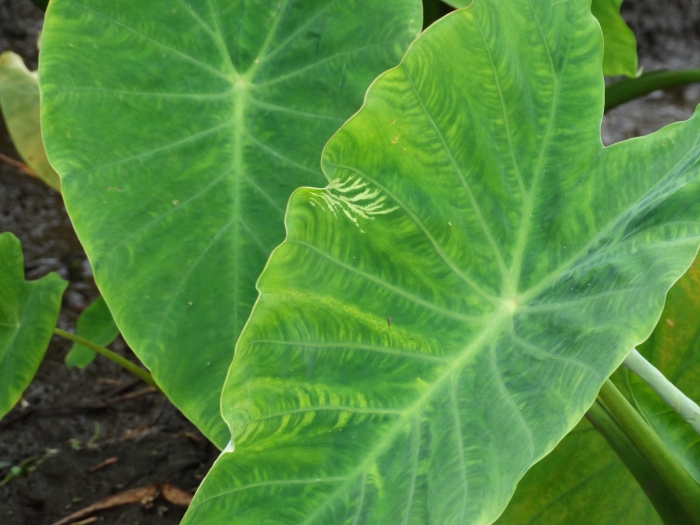Green Taro
(Colocasia esculenta)
Green Taro (Colocasia esculenta)
/
/

Plant pests and diseases
CC0














































































Estimated Native Range
Summary
Green Taro is valued for its lush foliage and is often used in water gardens, as a landscape plant in tropical areas, and for its edible corms in culinary applications. It requires a high amount of water and can be grown in full sun to part shade. The soil should be rich, moist, and well-draining, although it can tolerate standing water. Taro is harvested when the leaves begin to yellow and the plant height decreases. It is important to note that Colocasia esculenta can become invasive outside its native range, particularly in regions like California and Florida, so it should be planted with caution.CC BY-SA 4.0
Plant Description
- Plant Type: Herb
- Height: 3-6 feet
- Width: 3-6 feet
- Growth Rate: Moderate
- Flower Color: N/A
- Flowering Season: Summer
- Leaf Retention: Evergreen
Growth Requirements
- Sun: Full Sun, Part Shade
- Water: High
- Drainage: Fast, Medium, Slow, Standing
Common Uses
Border Plant, Deer Resistant, Edible*Disclaimer: Easyscape's listed plant edibility is for informational use. Always verify the safety and proper identification of any plant before consumption., Potted Plant, Rabbit Resistant, Water Garden
Natural Habitat
Lowland wetlands of South and Southeast Asia
Other Names
Common Names: Cocoyam , Dasheen , Elephant Ears , Eddo , Elephant’s-Ear , Caladium , Wild Taro , Zehrwurzel , Malanga , Alcocaz
Scientific Names: Colocasia esculenta , Colocasia esculenta subsp. illustris , Colocasia esculenta var. illustris , Colocasia formosana , Arum esculentum , Colocasia antiquorum , Colocasia esculenta var. aquatilis , Colocasia esculenta var. antiquorum , Colocasia esculenta var. esculenta , Colocasia tonoimo
GBIF Accepted Name: Colocasia esculenta (L.) Schott